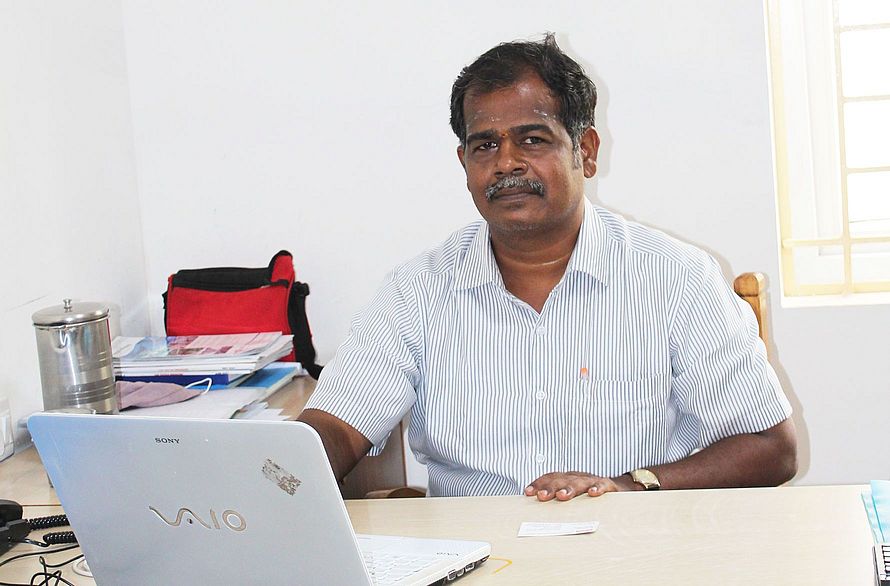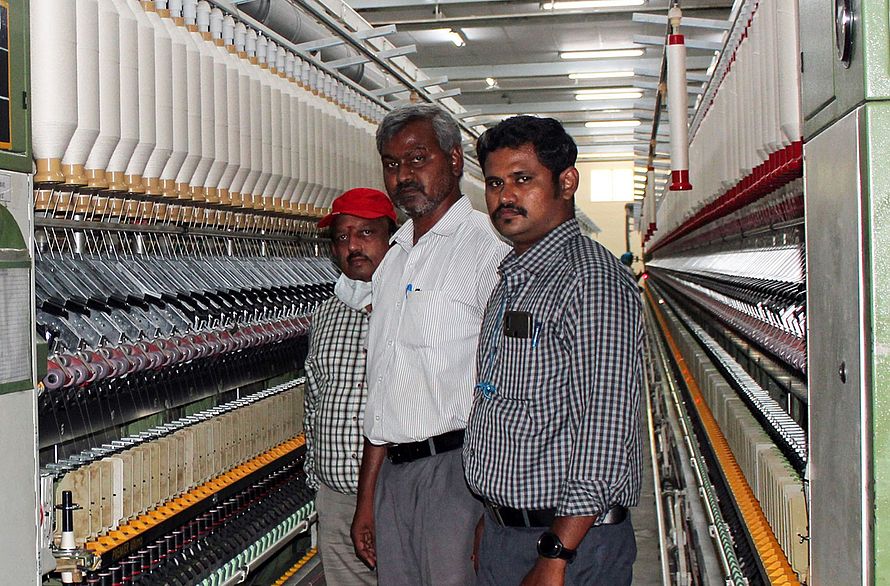Driving Profitability with LENA and CROCOdoff
Things are looking up again for India’s Divyalakshmi Textiles, in Aruppukottai. Demand is resurging and the pandemic finally seems under control. Operating 27 600 spindles at its mill in the town of Aruppukottai, the heart and soul of India’s textile manufacturing industry, Divyalakshmi Textiles is specialized in manufacturing customer-specific compact, high-twist yarns, with a count range from Ne 60 to Ne 80. Things would be perfect if only energy prices weren’t so high and set to rise even more. In an effort to meet growing demand while keeping energy consumption under control, Divyalakshmi Textiles turned to LENA high speed spindles.
The Challenge
Staying competitive in a tough market requires smart investments. Against the backdrop of favorable markets, Divyalakshmi decided to upgrade their non-autodoffer ring spinning machines with an ad-on doffer system. The ultimate goal, however, was to increase production with their 15-year-old machines and run them at 24 000 rpm without having to replace the existing motor and drive. The strategy was to avoid purchasing new machinery but still ensure that the growing demand of customers for their specific yarns could be meet. Given the company’s acute awareness around climate and the company’s forward looking environmental policy, sustainability also played into the decision. Finally, the aim was to further reduce the workload of the current operators who had been working tirelessly to meet surging demand.
The Solution
By replacing almost half of their spindle capacity with Novibra LENA spindles, Divyalakshmi gained the competitive advantage it was aiming for. LENA spindles are designed to achieve highest speeds with minimal energy consumption. The wharve diameter of LENA spindles is reduced to 17.5 mm, allowing the machine to operate more slowly while maintaining both the same spindle speed and the desired yarn count. Additionally, the smaller diameter of the LENA spindle shaft allows further energy savings. Novibra's innovative technology with its uniquely small wharve diameter made it possible to achieve higher speeds without further adaptions on the machine, as the load on the main motor could be reduced.
The Customer’s Benefits
Divyalakshmi carried out several measurements to determine the real energy-saving potential of the LENA spindles. They showed a reduction in power consumption of up to 12 % with Ne 80 compact yarn compared to other auto doffer spindles.
For both yarn counts, Ne 60 and Ne 80, the speed of the ring spinning machine was increased from 20 000 to 21 000 and 23 500 to 24 000, respectively.
The customer opted to equip their LENA spindles with CROCOdoff self-cleaning clamping crowns. The clamping crowns are the reason why machines no longer need to be stopped to clean the yarn catching area of the spindle, and so production continues seamlessly. The decision for CROCOdoff thus brought Divyalakshmi further benefits as the cleaning and maintenance time was reduced. In addition, after-doff ends down have been reduced to less than 5 % compared to 10 % before using CROCOdoff. The optimization of the spindle maintenance reduced operator workload and increased mill management flexibility. The team also observed a favorable reduction in underwinding waste compared to traditional systems, because CROCOdoff needs less than one turn of the yarn in order to execute secure yarn grip for doffing.
The energy saving spindle LENA in combination with the self-cleaning underwinding system CROCOdoff set a new benchmark for high-speed applications. It’s an unbeatable team for spinning mills who want to enhance efficiency and position themselves for the current market recovery.
With Novibra's LENA spindles, we were able to achieve our goal of increasing the speed of the ring frame while even saving energy. Thanks to CROCOdoff we managed to reduce interruptions due to restarting of the machines and additionally, we decreased underwinding waste.Mr. Velmurugan, General Manager

